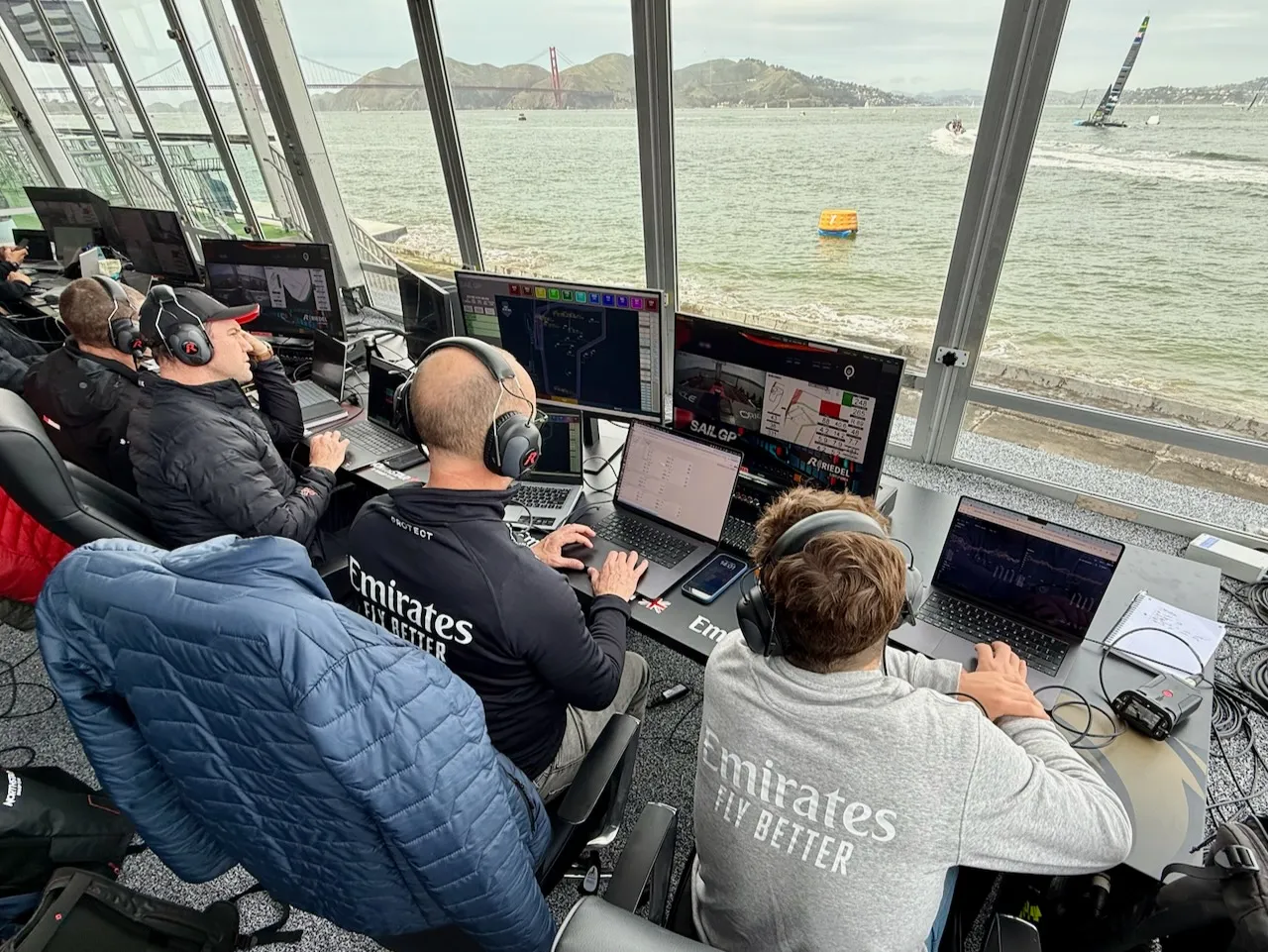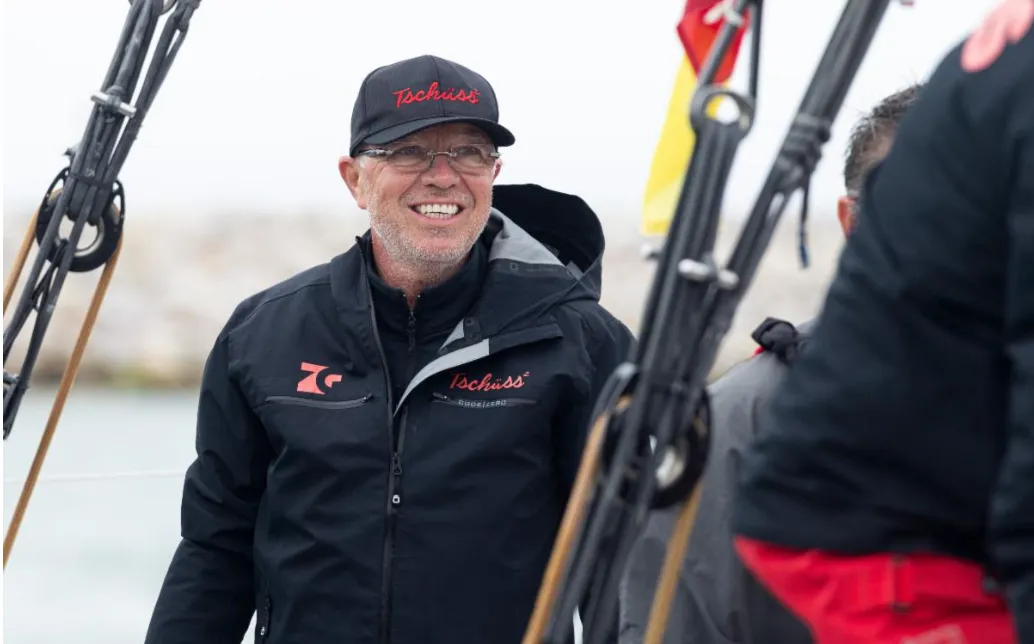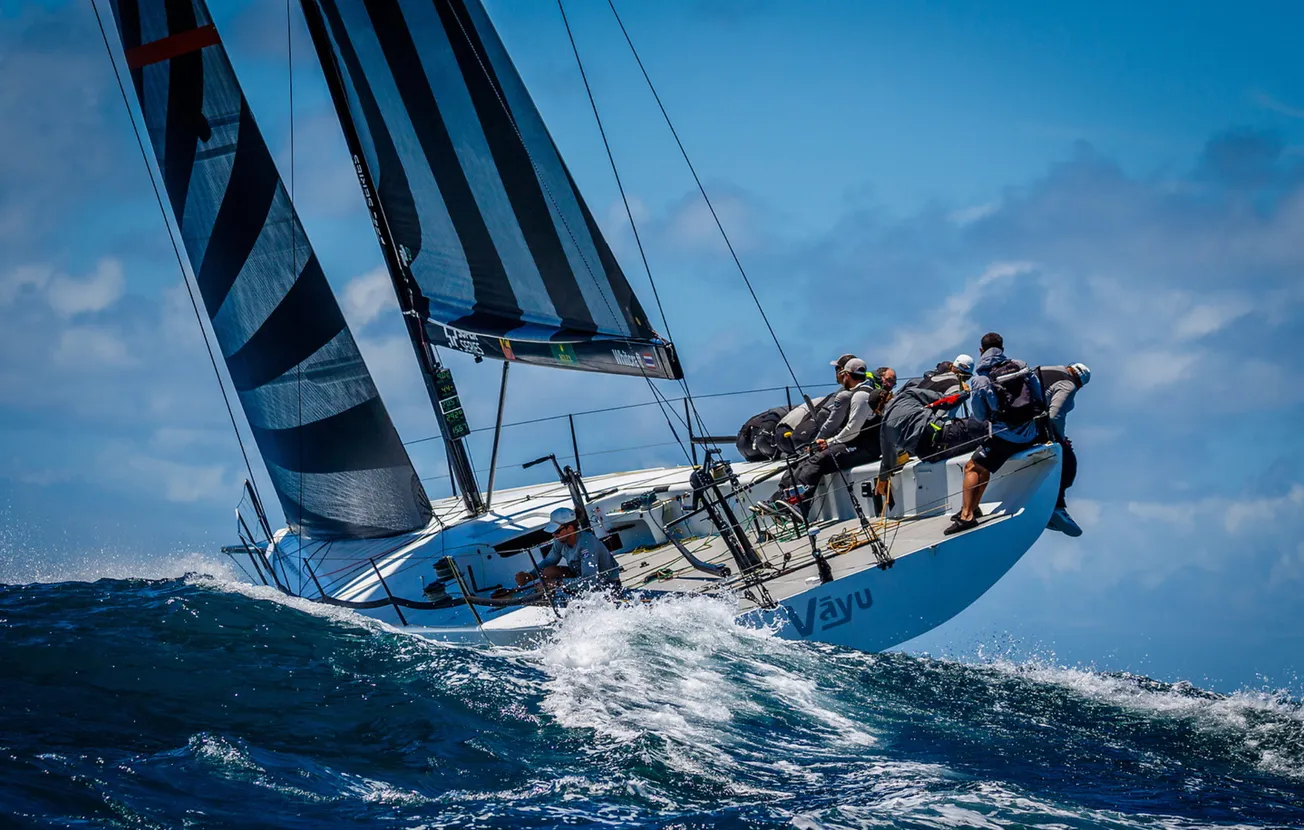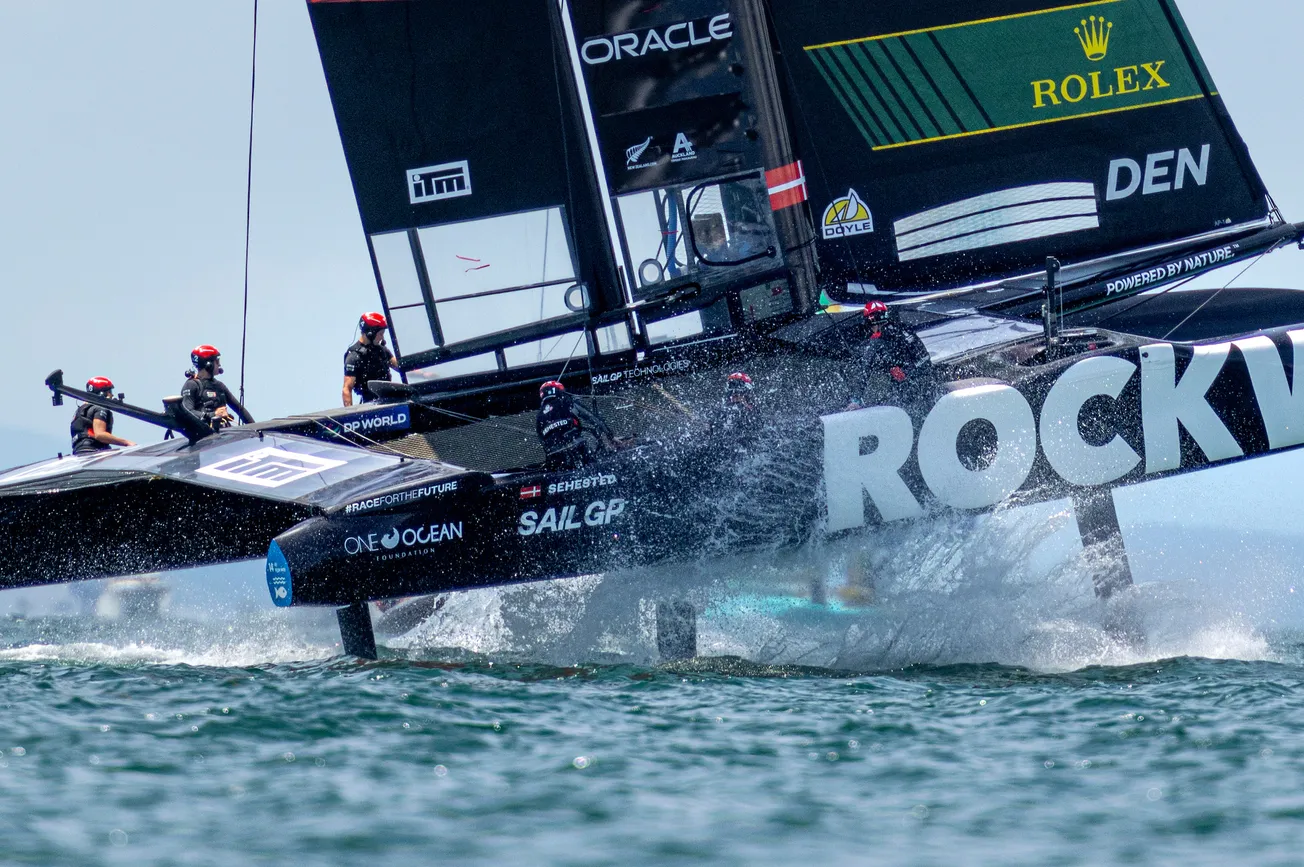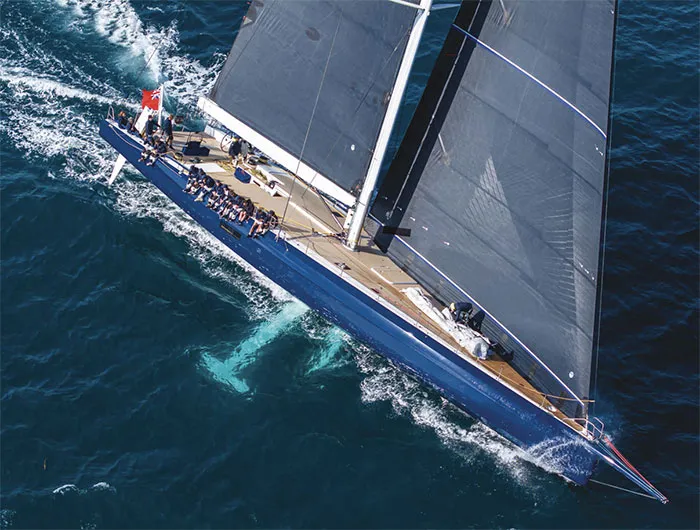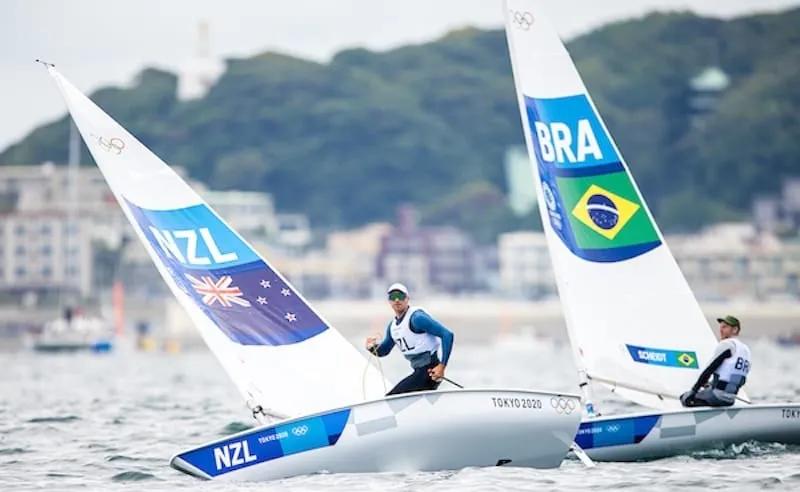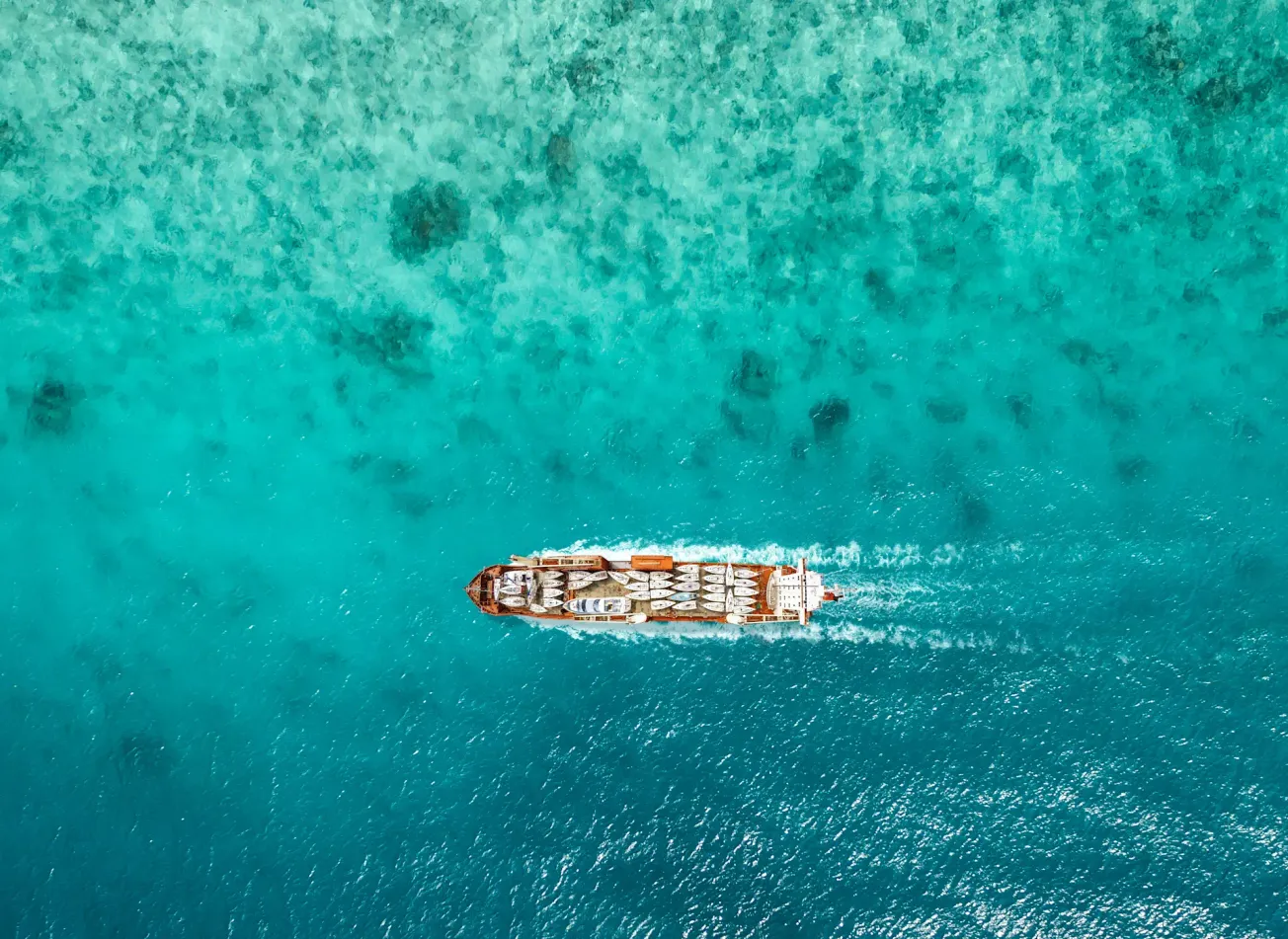The coaching role in SailGP has changed considerably over the last five seasons. Originally coaches were based on the water in the team chase boat with limited data and no comms with the sailors during a race.
Now for Season 5 they are shore-based, working from a coaches’ booth where they have ready access to live data from their boat (and the rest of the fleet) and they are able to talk to their sailors at any point in a race.
Yacht Racing Life editor Justin Chisholm sat down with Emirates Great Britain SailGP Team coach Rob Wilson to get his take on the coaching role and how it has evolved over time.
Justin Chisholm: You have been coaching the British team since Ben Ainslie took it over in Season 2. What’s your take on the changes to the coaches’ role since then?
Rob Wilson: Two or three seasons ago–before we moved into the coaches’ booth–you could just about get away with one person in the coaching role. In fact, even in that first season when we moved onshore into the booth, we were only really giving a little bit of tactical information. I don’t think we had access to the data the sailors can see on the wing display on board the boat, so we didn’t really have the full tactical picture. The sailors had that data, plus a close-up view of the racecourse and so were in a much better position to make judgement calls for themselves. We were really just monitoring comparative performance and general wind trends.
Justin Chisholm: So what’s changed?
Rob Wilson: Now we have access to the SailGP umpiring software–through the UmpApp–so now we are definitely a backstop resource for avoiding collisions. That’s one reason why we started bringing more people into the booth. After we had an incident with Spain (see video below) where we had the booth as a backstop, but with just one person doing multiple tasks you couldn’t keep an eye on UmpApp all the time. Now with 12 boats you have to have someone constantly monitoring it. It gives us a safety net to help avoid collisions that could effectively end your season. A big crash means you maybe miss one or two events and then you get season points deducted too.
Justin Chisholm: Who do you have in the booth with you?
Rob Wilson: We have Nick Robins [a member of the British Athena Pathway Youth America’s Cup in 2024] and Ben Cornish [a helmsman and cyclor with the British Ineos Britannia challenge for the 37th America’s Cup]. They have enabled us to make a massive gain by spreading the important roles out between the three of us.
Justin Chisholm: How do you personally approach the role of coach for the British team?
Rob Wilson: I think one of the important aspects of being a team coach in any sport is to be able to identify the big picture of where the team direction should be. You always need to be aware of that, but then be able to–on a particular day, or in a certain set of circumstances–focus in on what it is that is going to make the biggest difference then and there.


